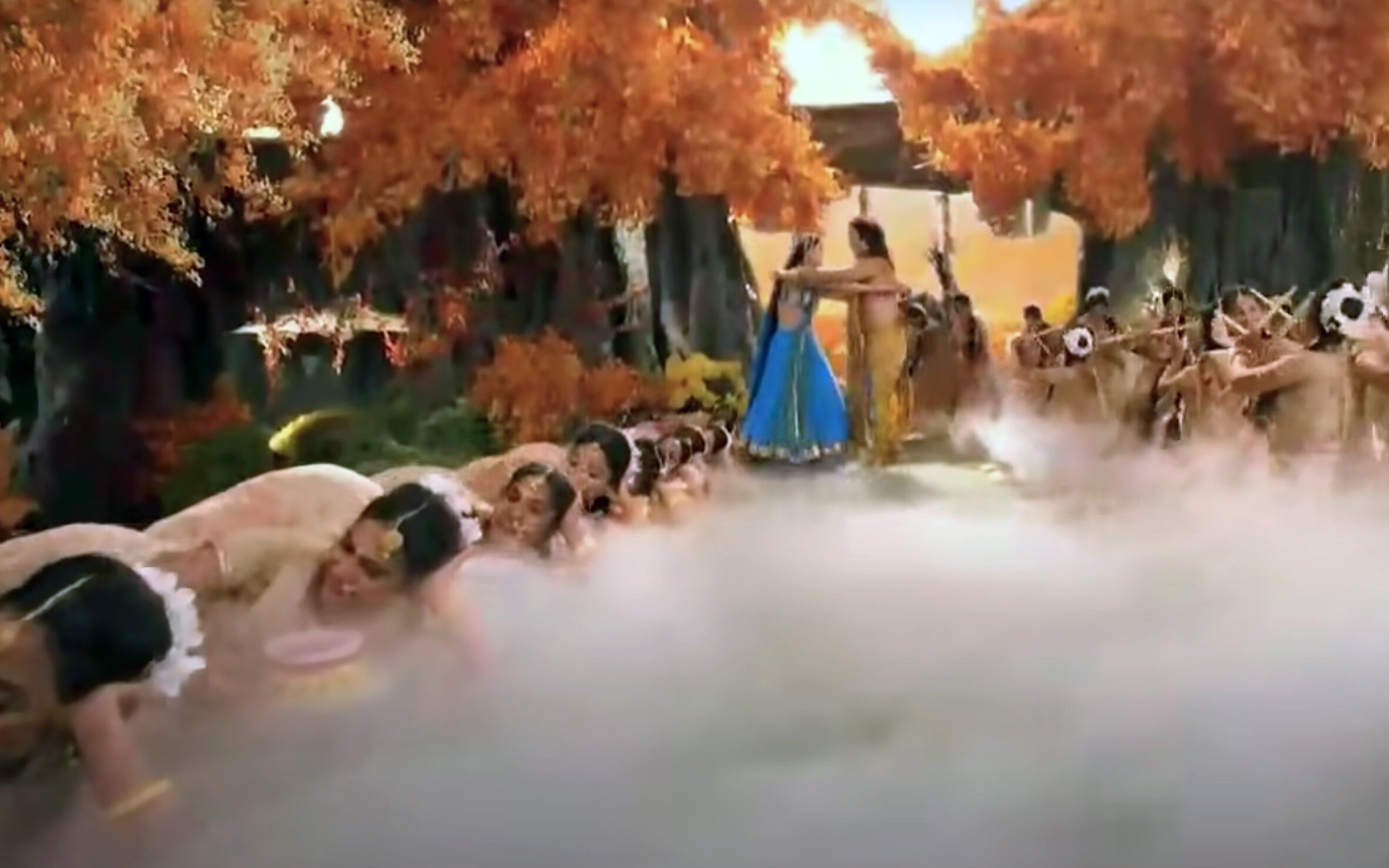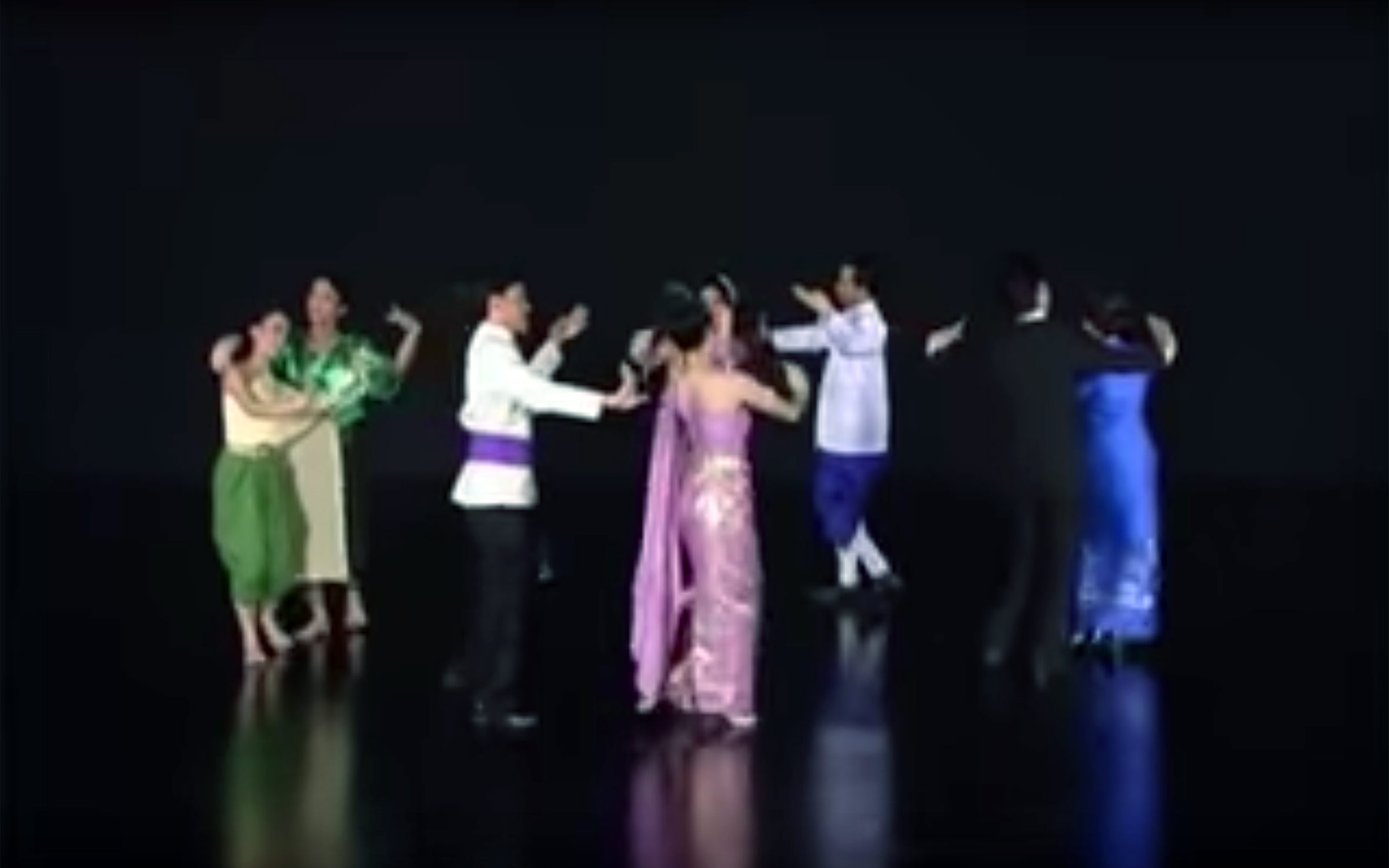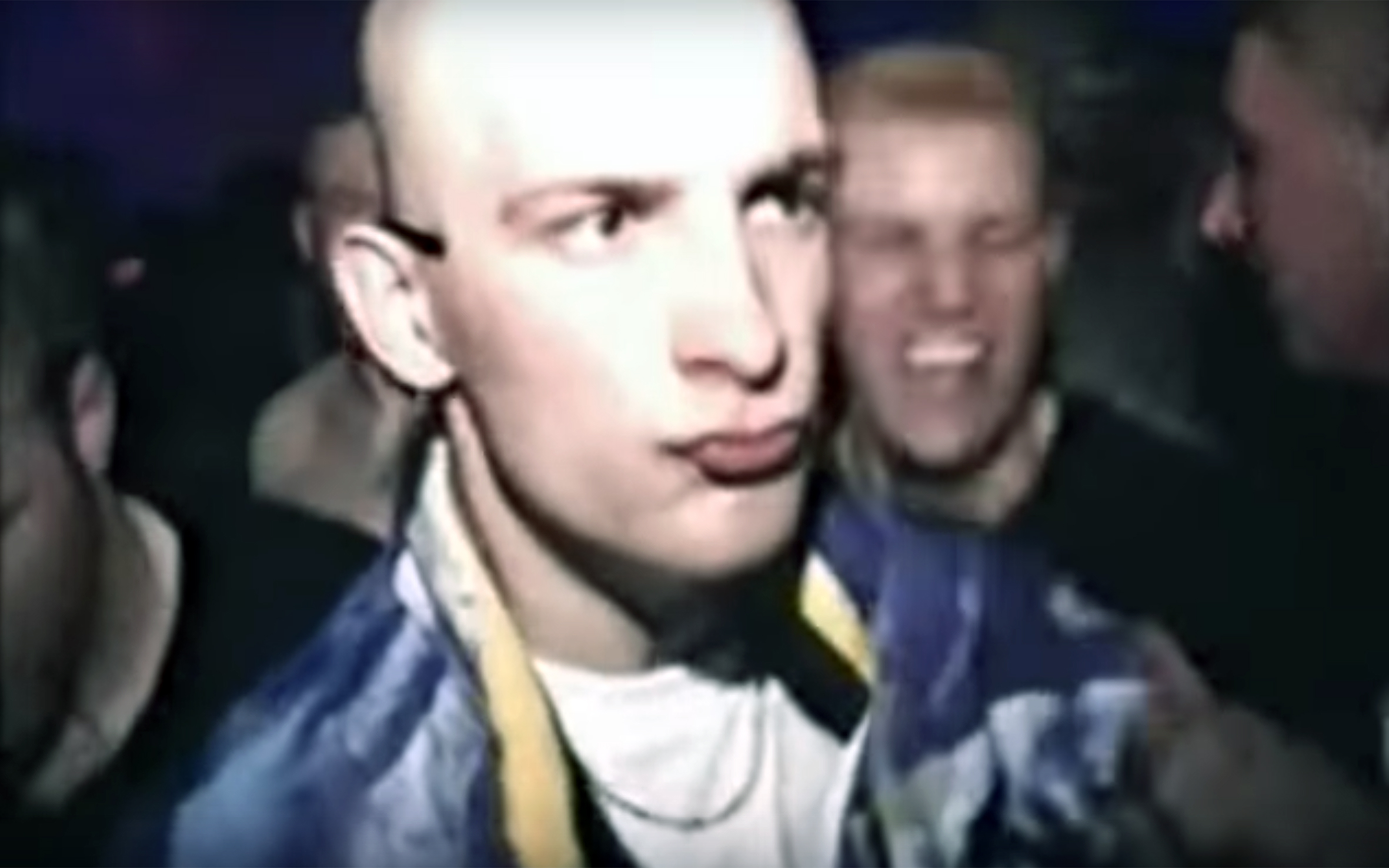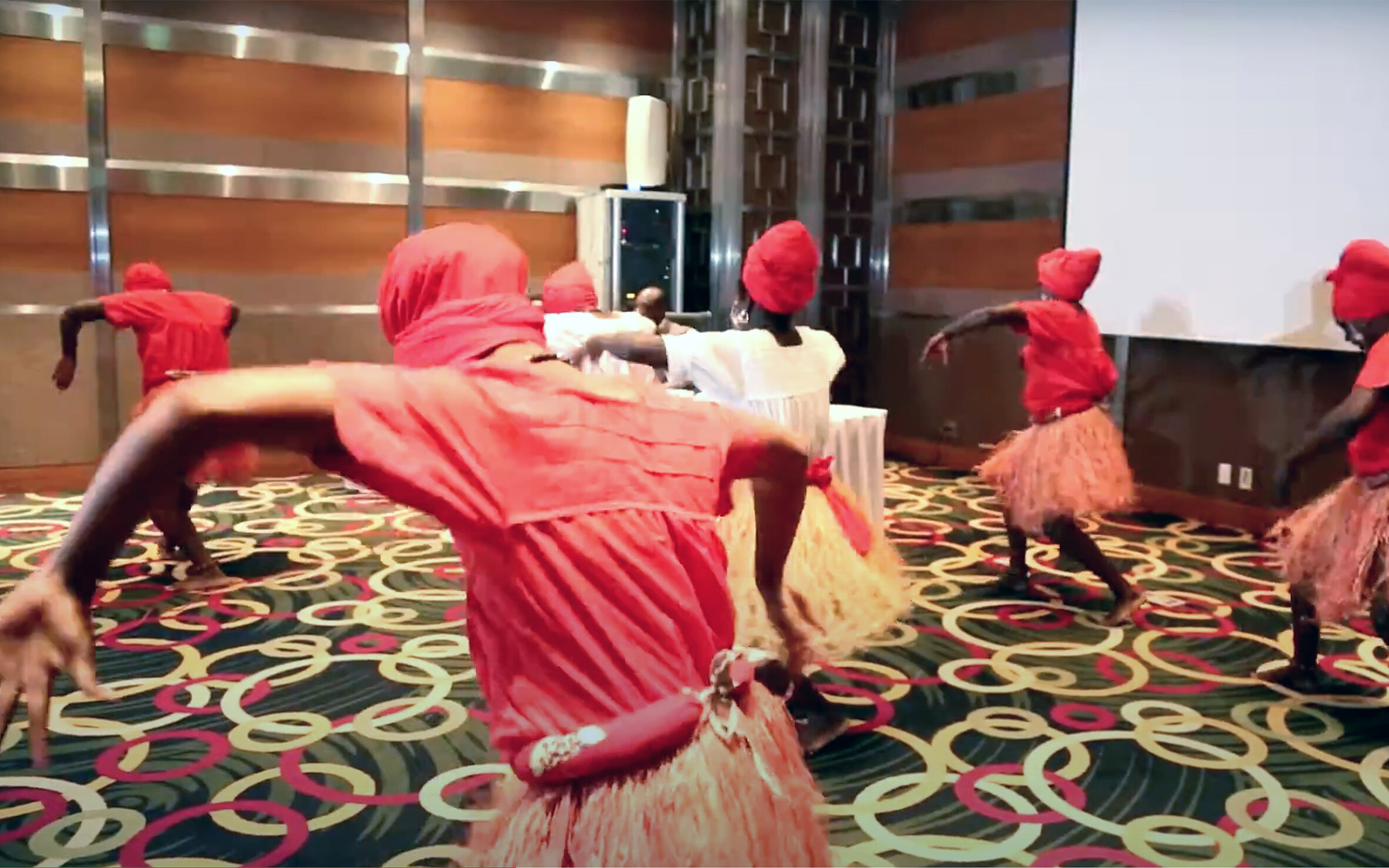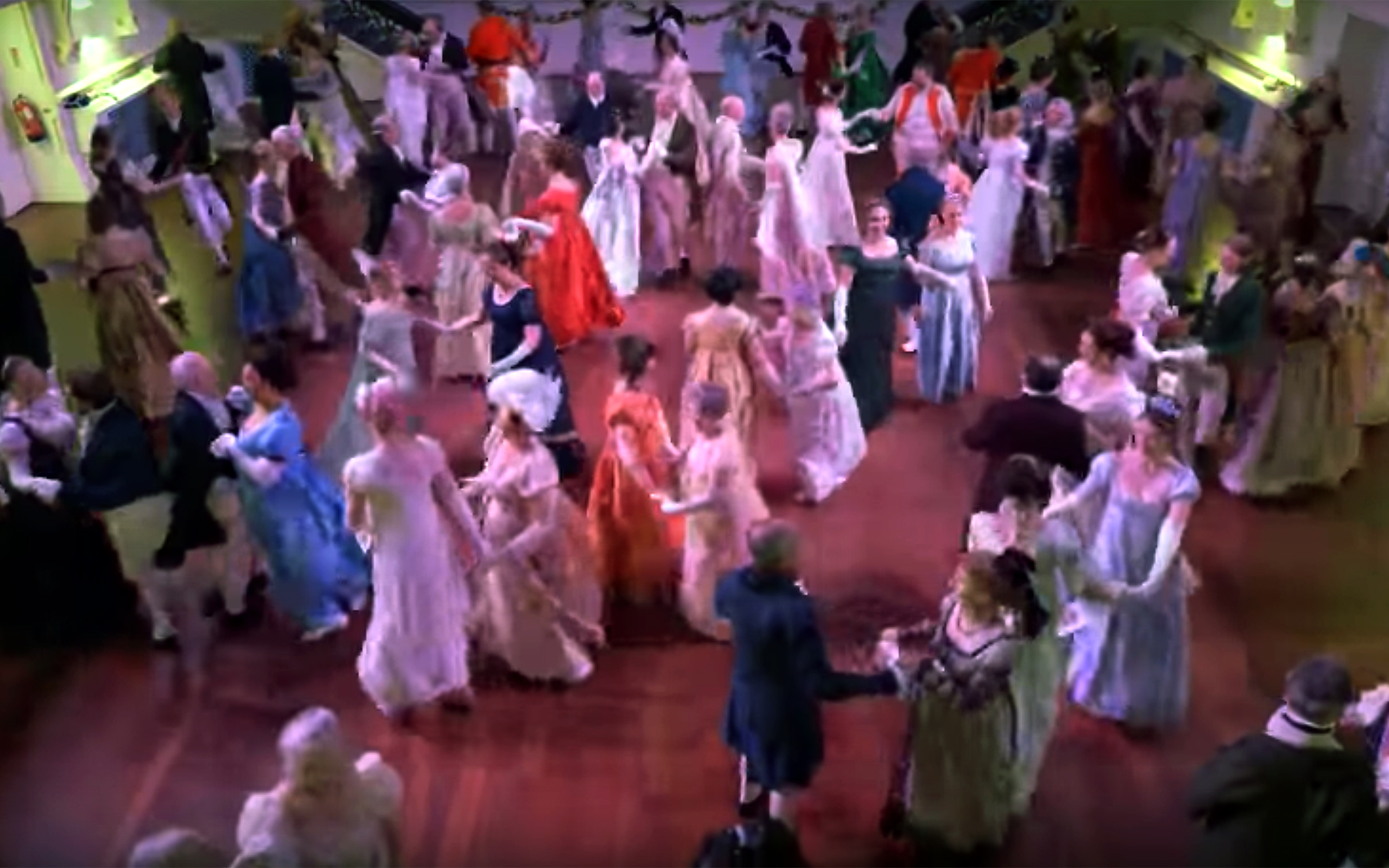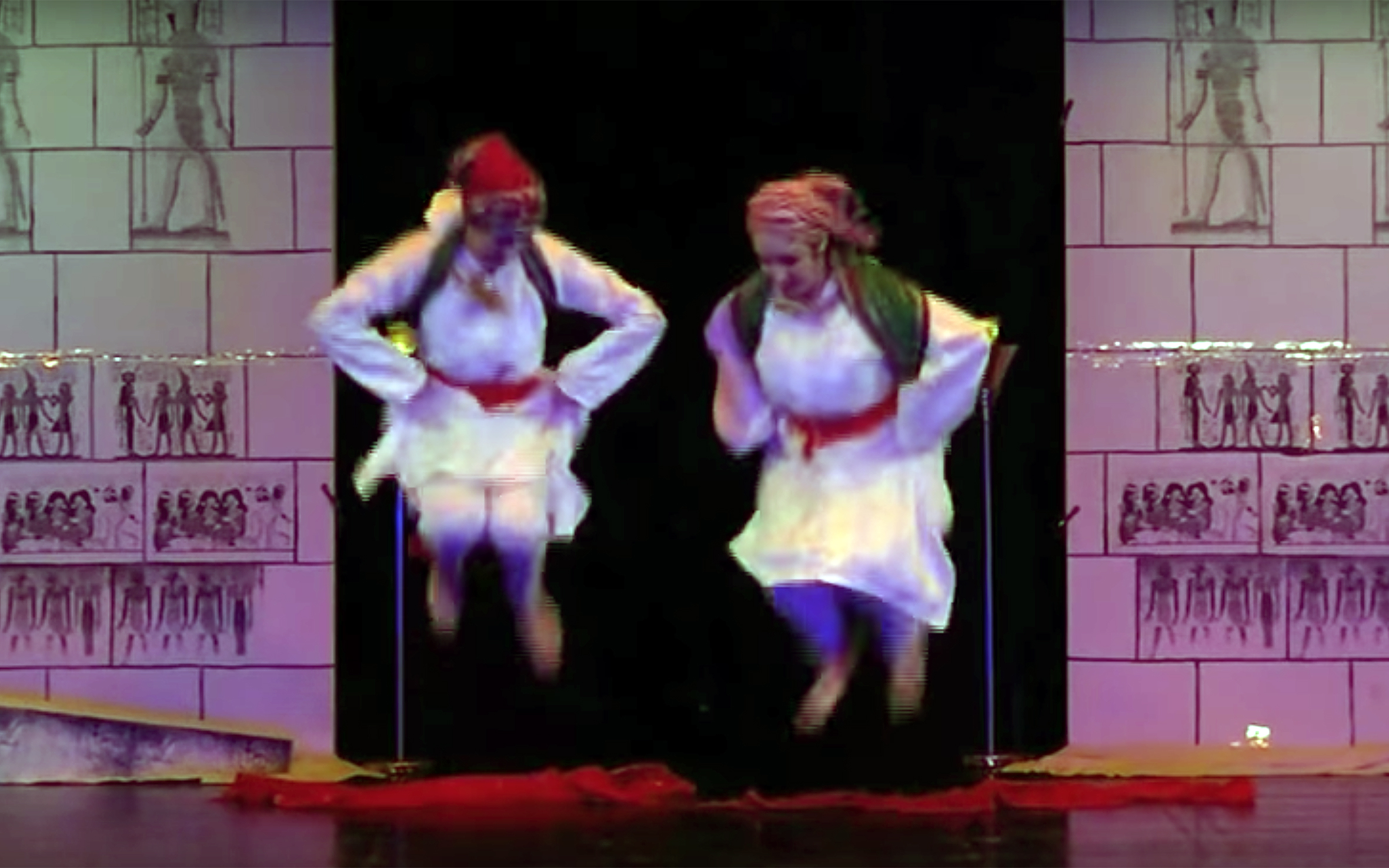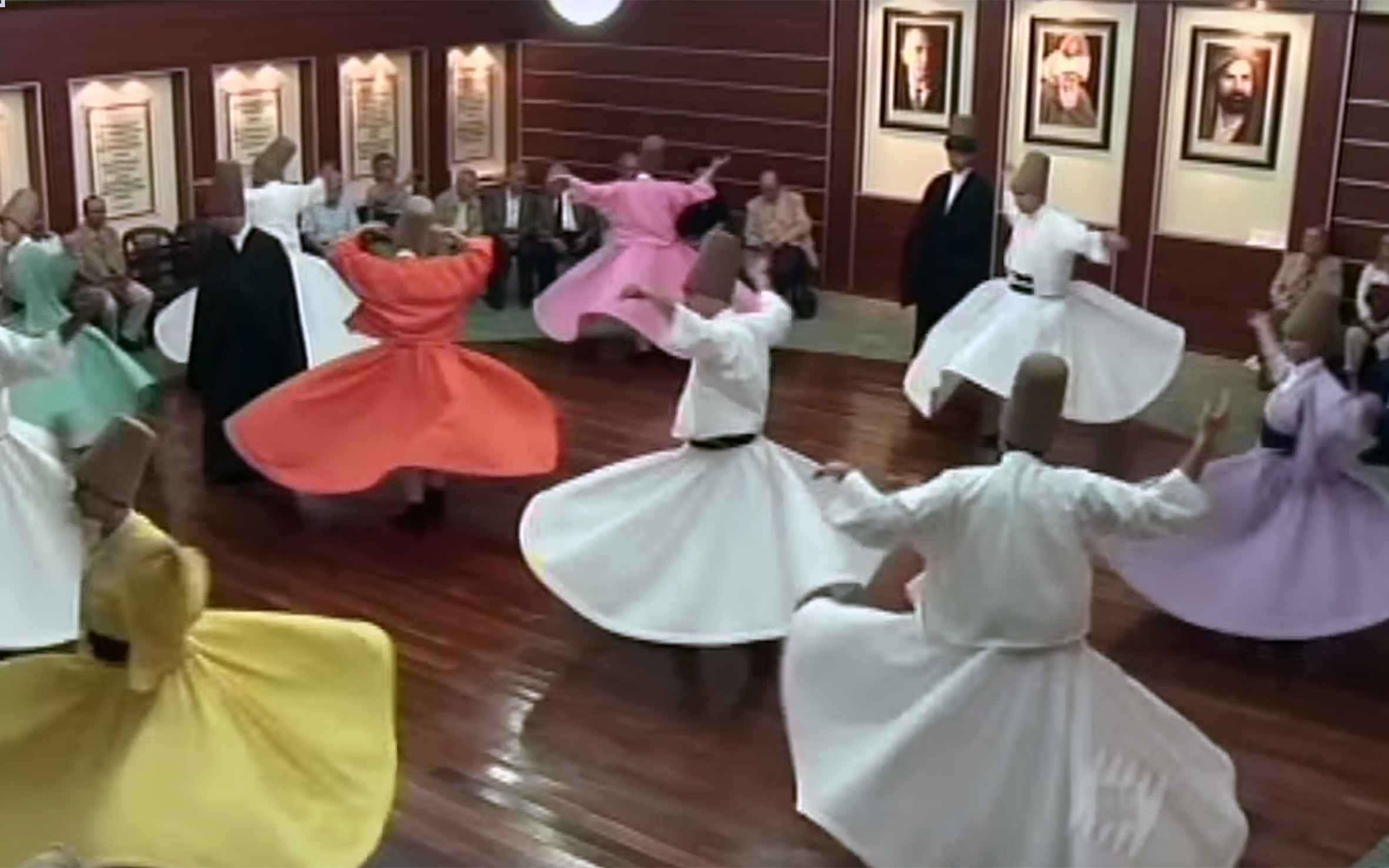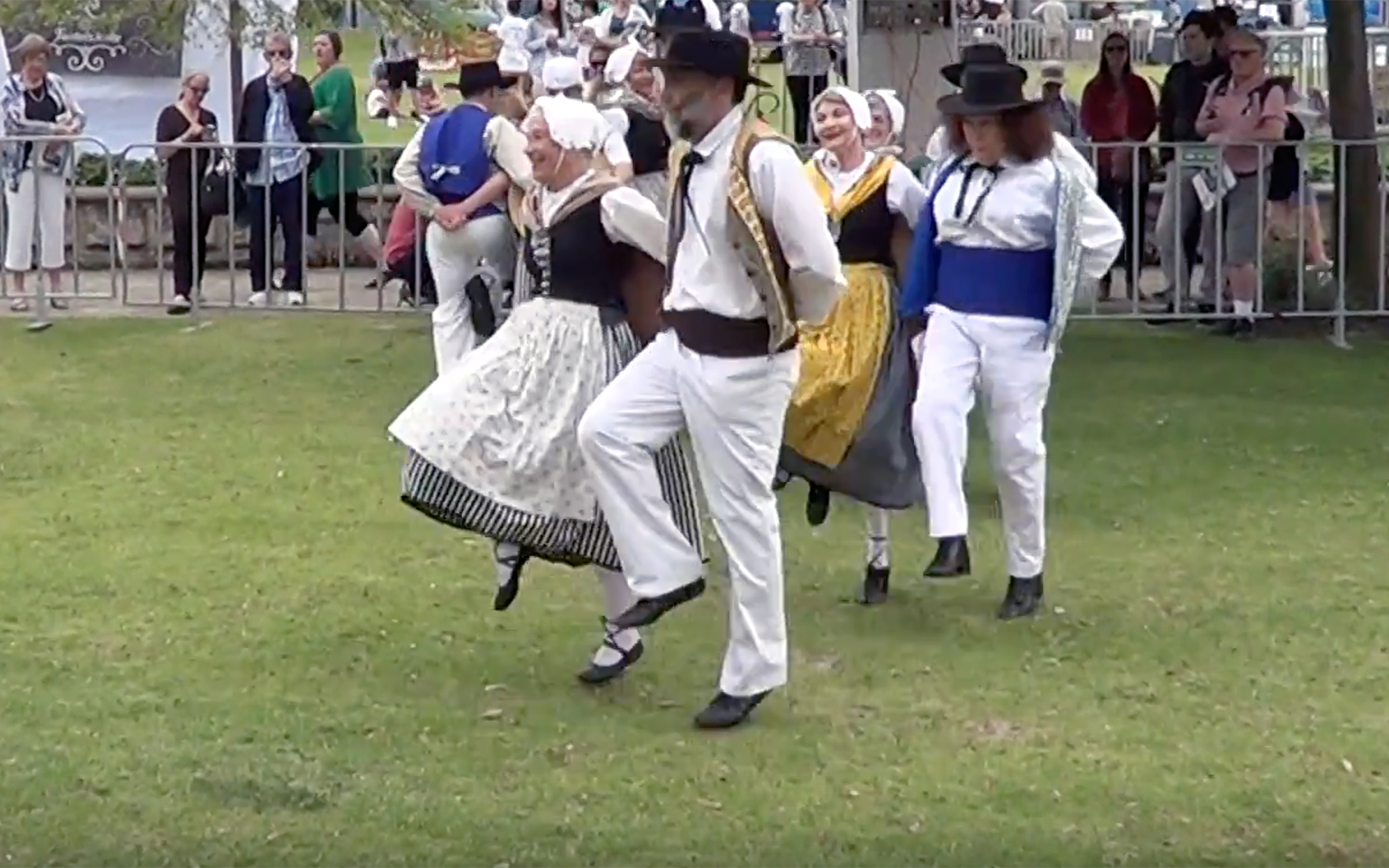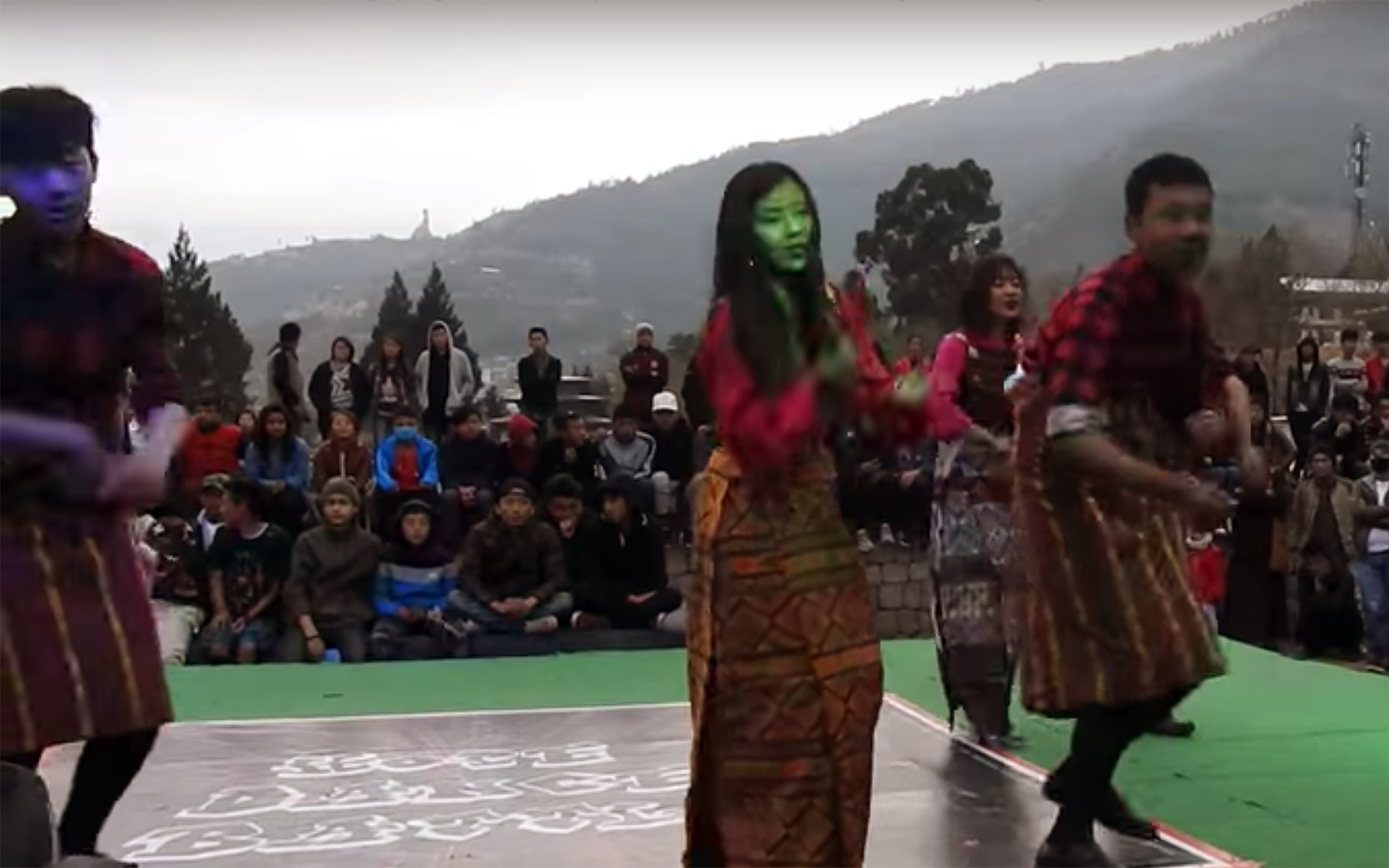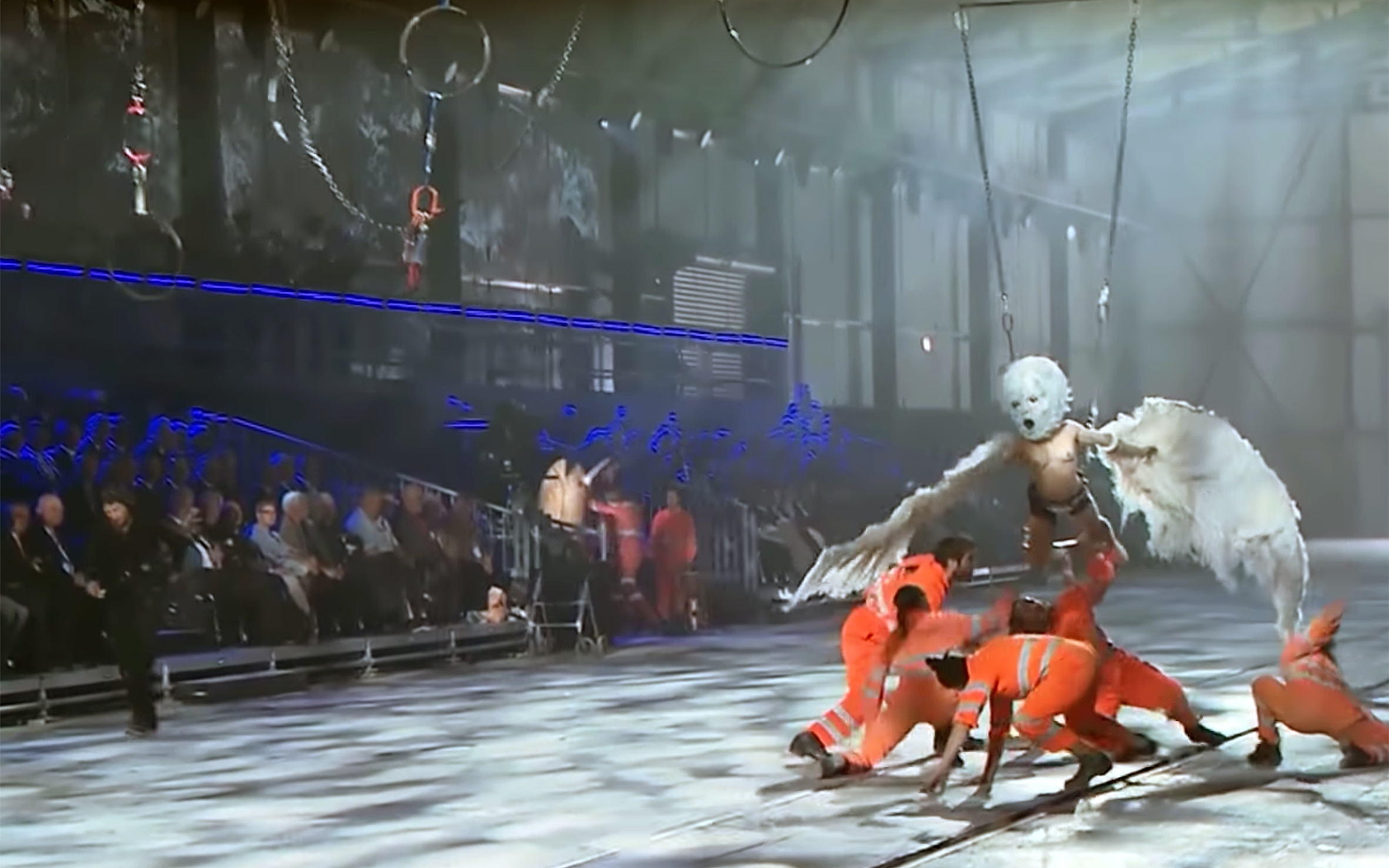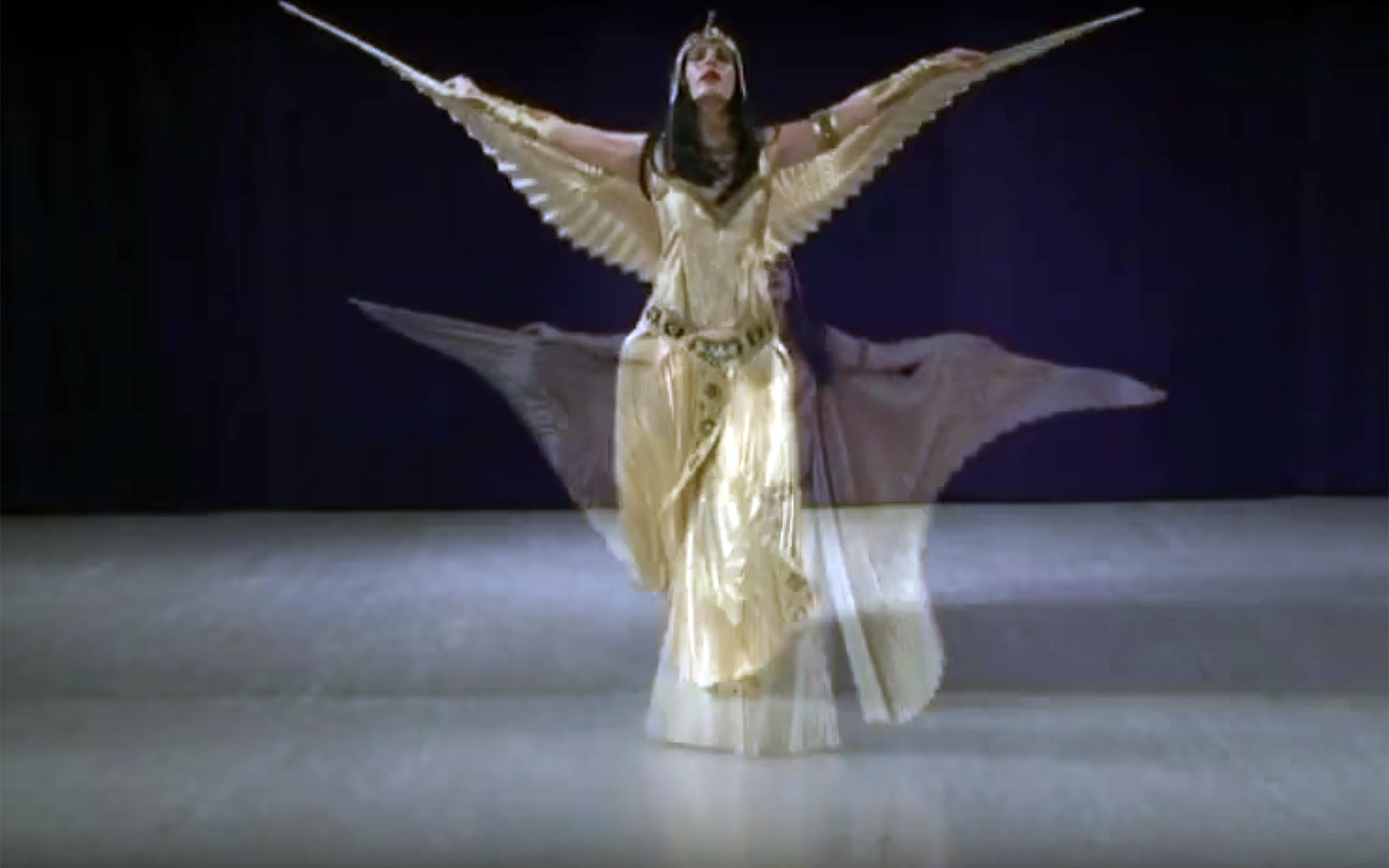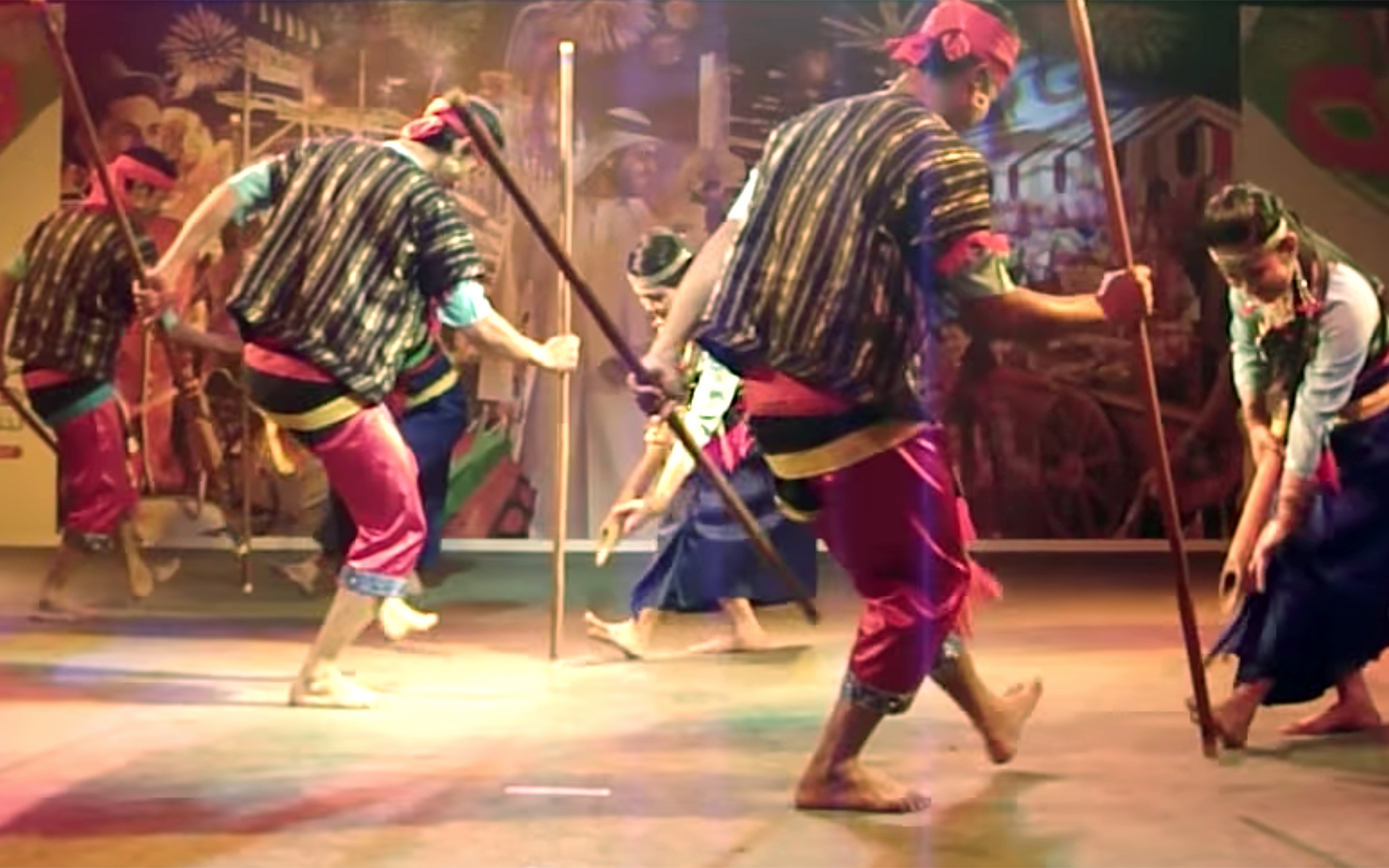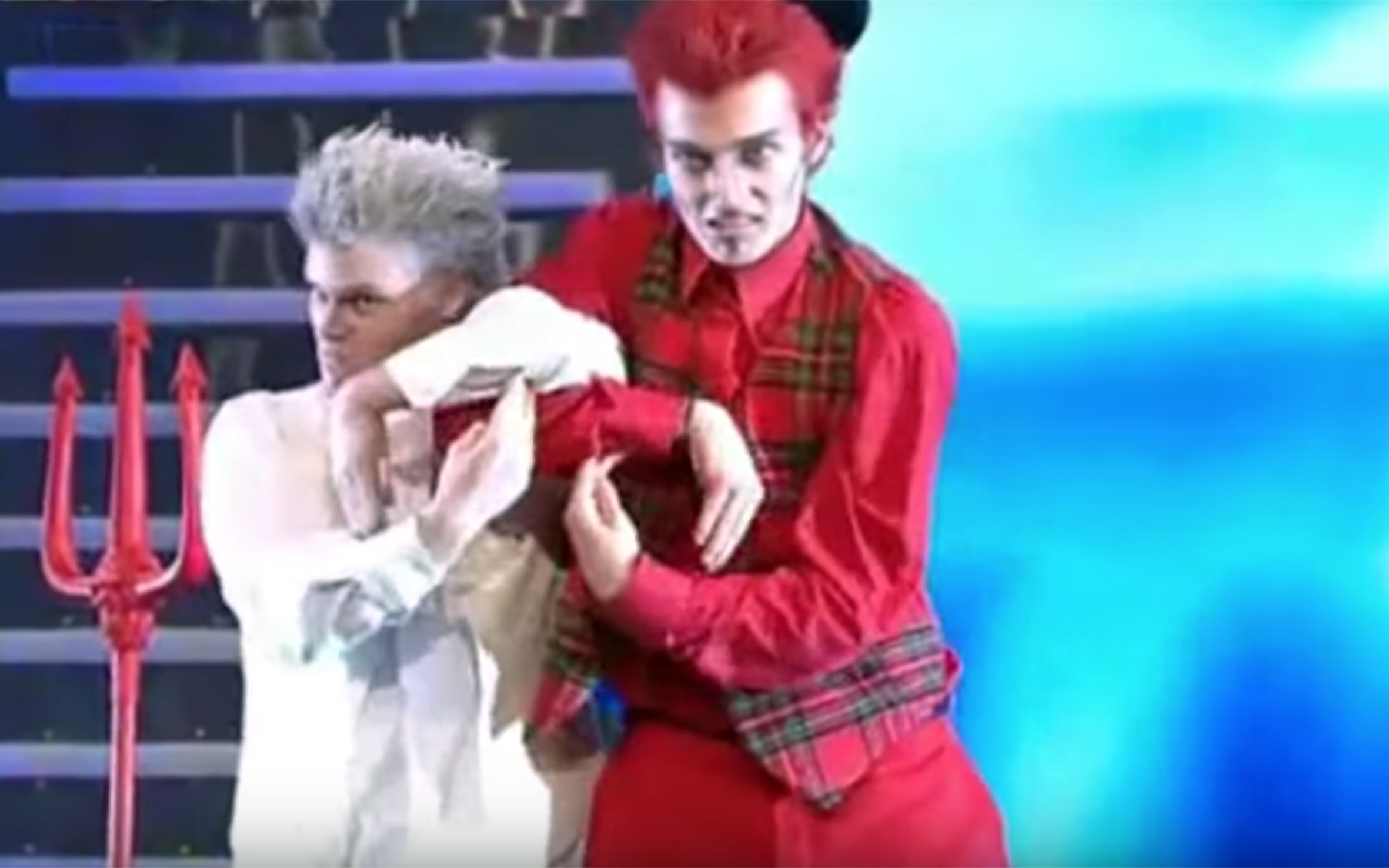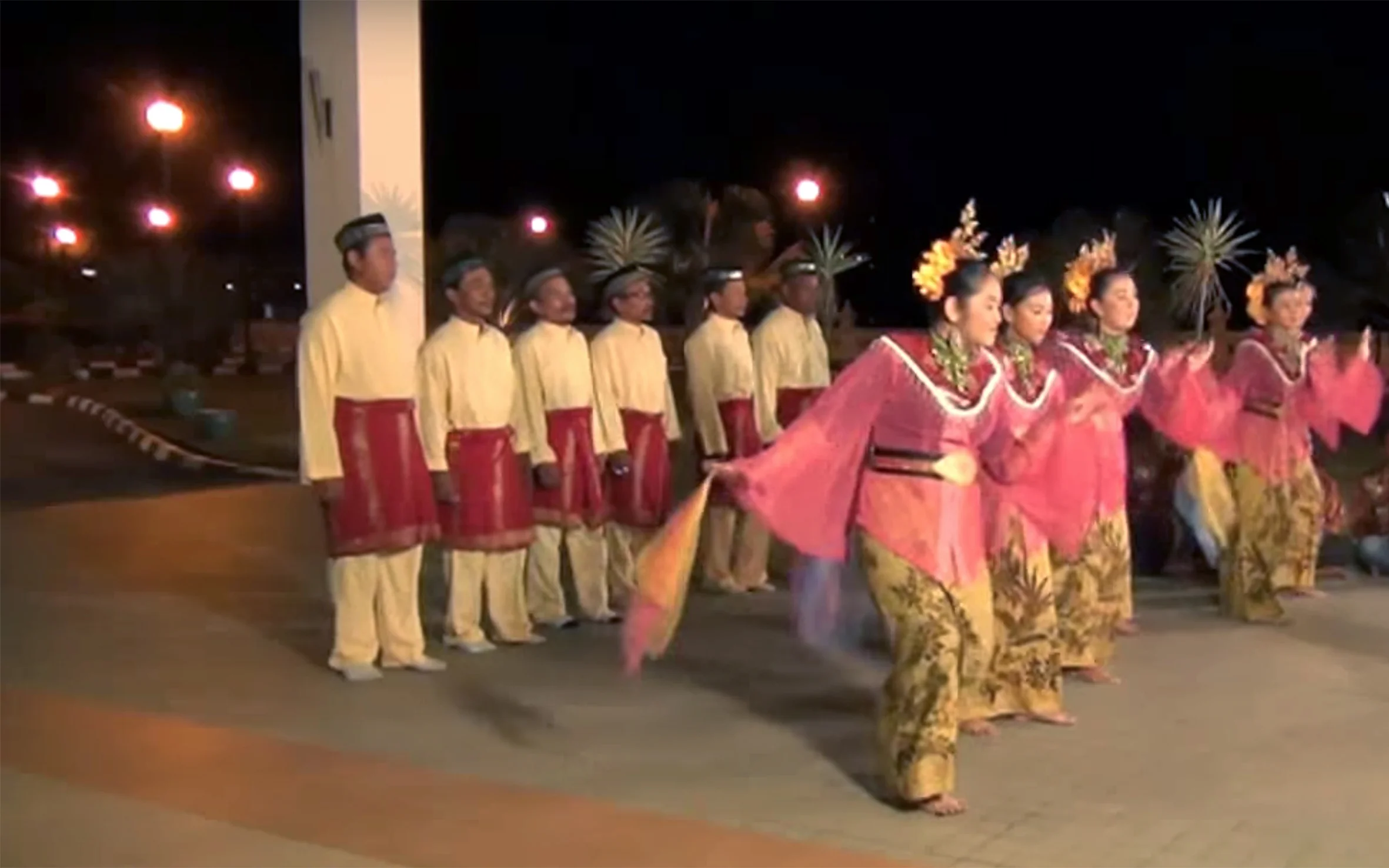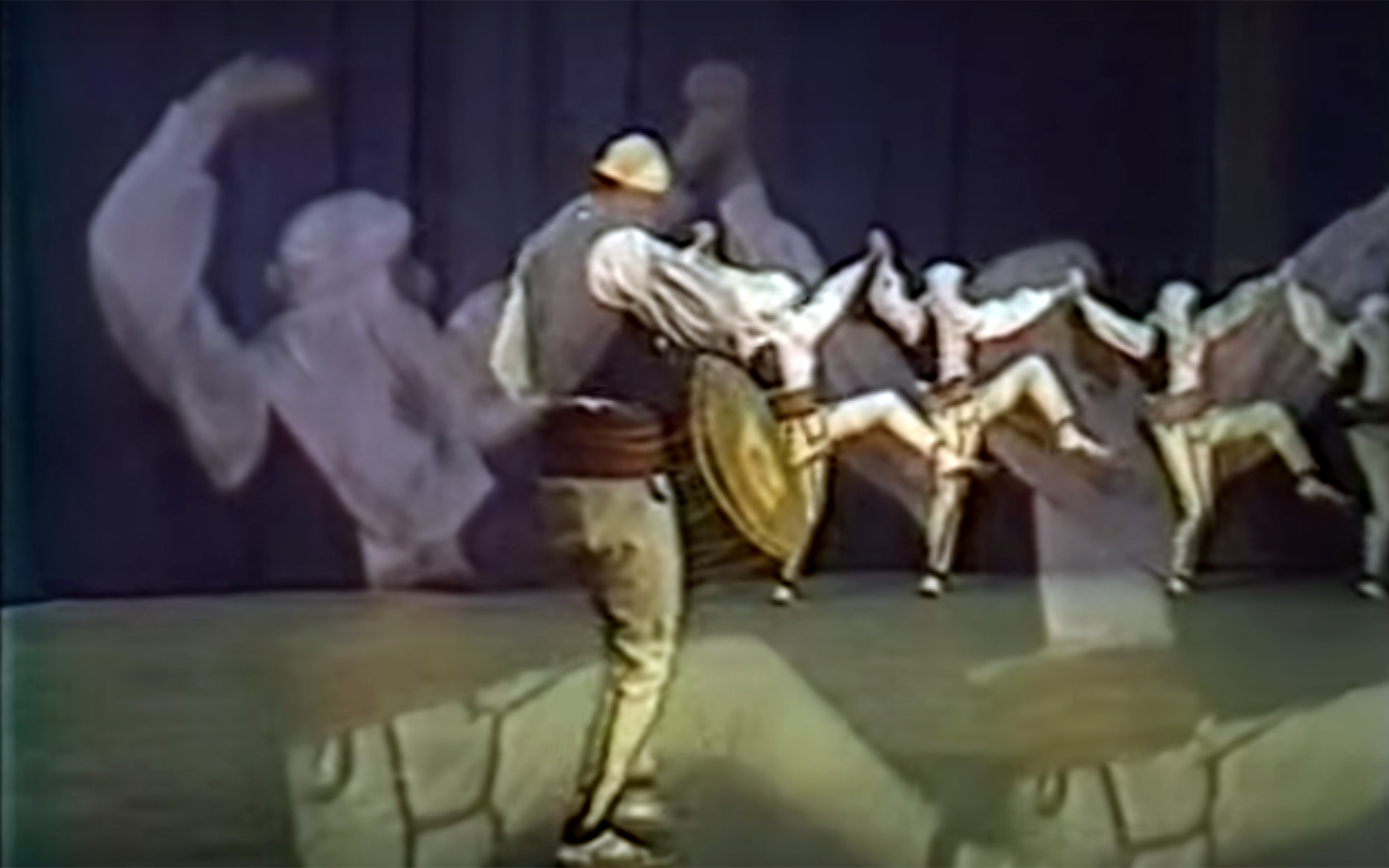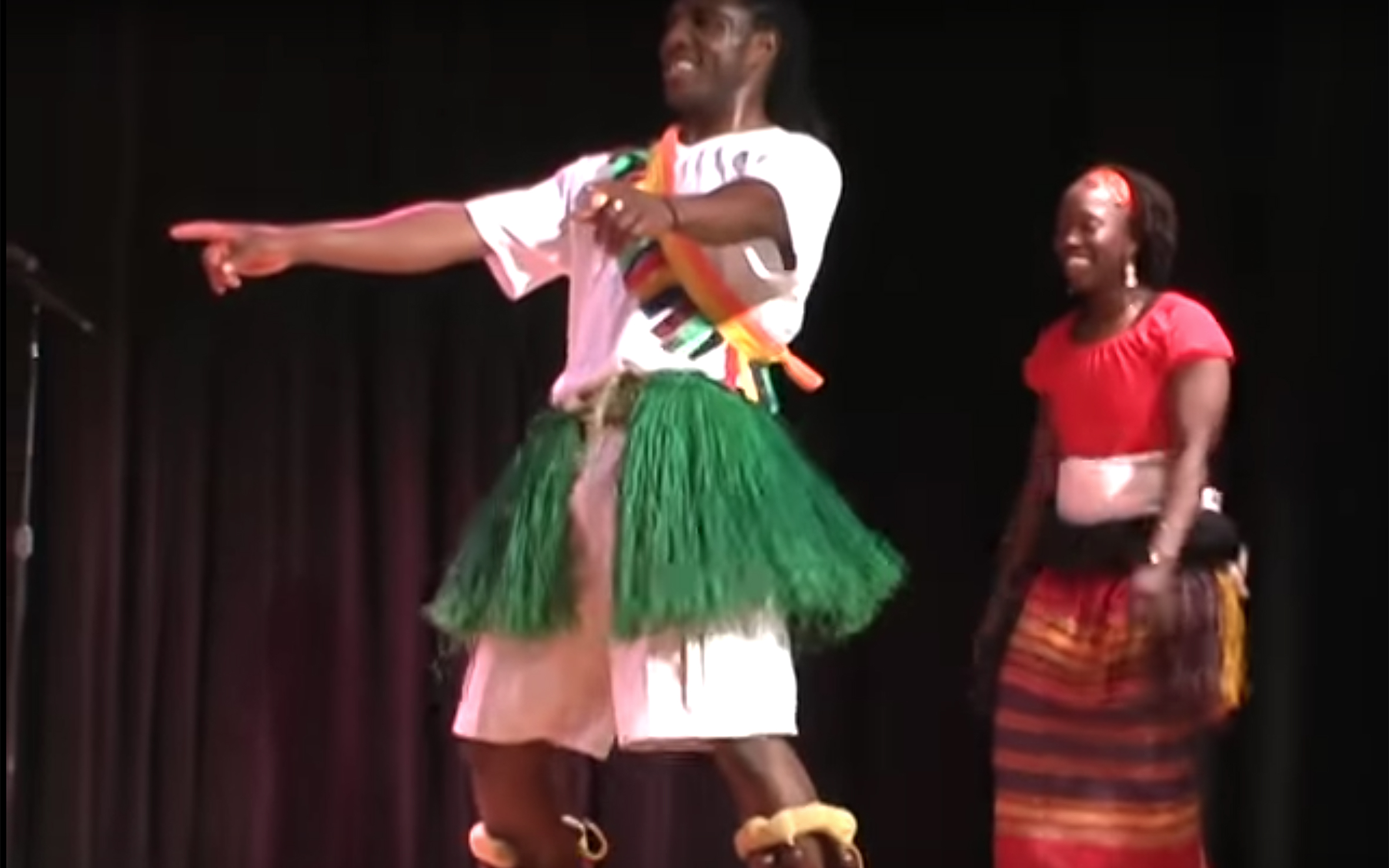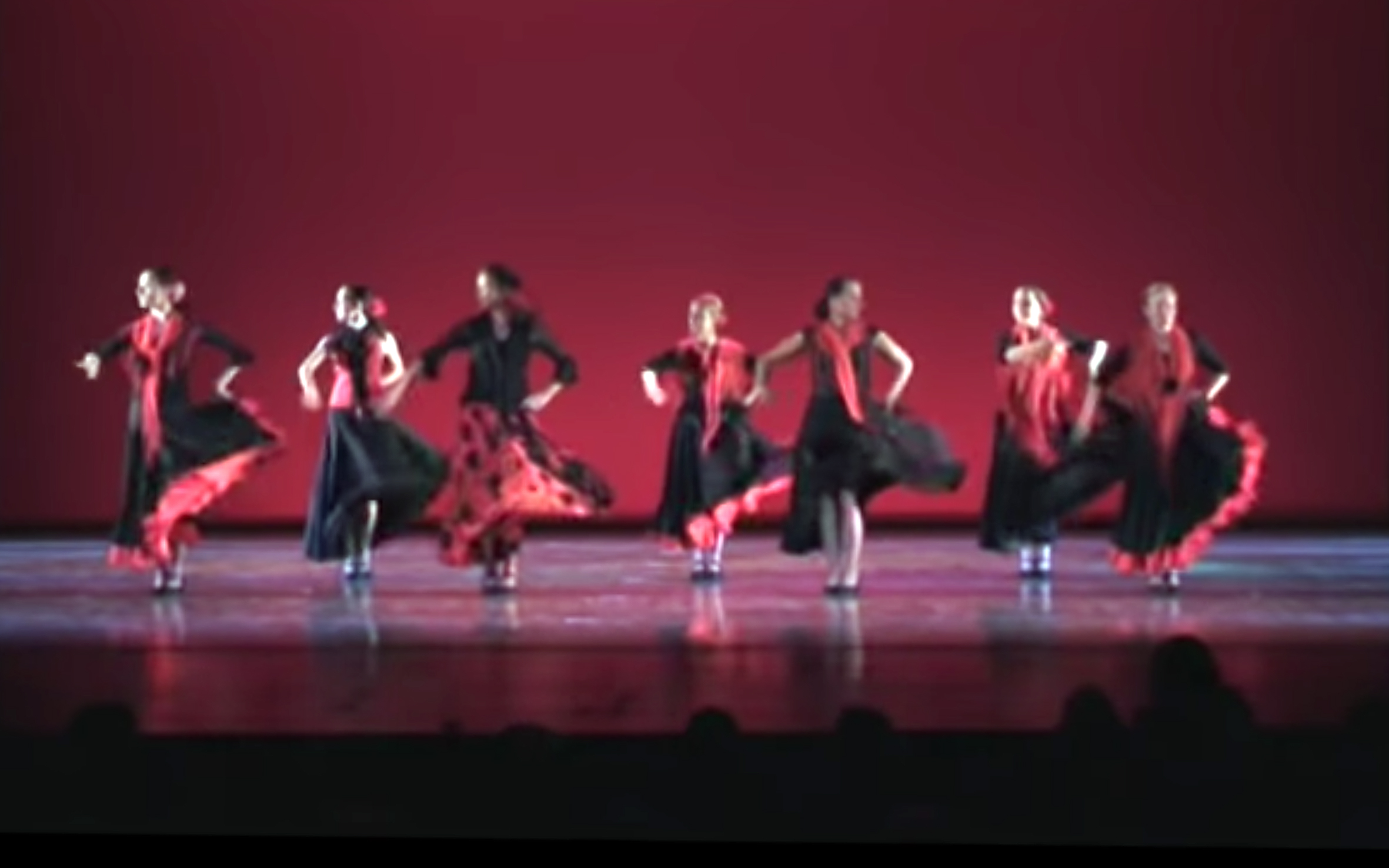721.Raas Leela / India
RAAS LEELA is part of the traditional story of Krishna, described in Hindu scriptures such as the Bhagavata Gita and literature such as the Gita Govinda, where he dances with Radha and her sakhis (friends). The term “rasa” meaning “aesthetics” and “leela” meaning “act”, “play” or “dance”, it is a concept from Hinduism that roughly translates to “play (leela) of aesthetics (rasa)”, or more broadly as “Dance of Divine Love”. It is the divine and devotional dance done by Lord Krishna with Radha Rani and all Gopi of Virndavan on a full moon day, which is known as Sharad Purnima. It is also a popular theme in kathak dance.
722.RAJDHAR / Guyana
RAJDHAR is a dance style developed in Guyana incorporating kathak, nagara, and bhojpuri styles to Tan Sangeet music. Intricate foot works, storytelling, and subtle hip movements are the essence of this dying art form.
723.Ram Muay / Thailand
RAM MUAY is a ritualised dance that takes place before Southeast Asian kickboxing matches such as Muay Thai.
724.Ramwong / Thailand
RAMWONG is a partner folk-dance from Thailand, also performed in Cambodia and Laos. It is a slow round dance with continuous circular movements. It incorporates graceful hand movements and simple footwork. Both men and women dance in the same circle. The basic step involves two couples folding their palms, with their fingers at right angles to their wrists, and bringing the hands up from behind the body to front of the face, straightening and bending the fingers to the music. Hands move in opposite directions and legs move to the rhythm and in the opposite direction of the partner. Dancers continue in a circle, keeping up with the beat of the drum. Often a decorated pole or a vase of flowers is used to mark the center of the circle.
725.Rathwa ni Gher / India
RATHWA NI GHER is a dance performed on the occasion of Holi (festival of colors) by the Rathwas, who dwell in Rath-Vistar, the hilly area of the southeastern part of Gujarat, India. The Gher (dance with music) performances begin on Dhulendi, which is “the day of flying colored dust”. This is the day when people smear each other with color powder. The festivities last for five days during which the Rathwas fast and abstain from sleeping, doing laundry and bathing. Both men and women perform Rathwa ni Gher together, in groups of 20 to 25 dancers.
726.Raut Nacha / India
RAUT NACHA is an Indian dance, performed by Yadava / Yaduvanshis, a caste which considers themselves to be descendants of Lord Krishna. The dance symbolizes Krishna worshiping and it is performed at the time of Dev Udhni Ekadashi. According to the Hindu calendar, this is the time of awakening of gods after a brief resting period. The dance closely resembles Krishna’s dance or raas leela.
727.RAVE / ACID HOUSE / England / Global
RAVE, also called ACID HOUSE, is a set of dances developed in the late 1980s and early 1990s, when news media and tabloids devoted an increasing amount of coverage to the hedonistic acid house/rave scene, focusing on its association with psychedelics and club drugs. After the emergence of the Acid House parties in the late 1980s up to 4,000 people were known to attend a rave. These events happened almost every weekend. Raving in itself became a symbol of free dance, whereby the movements have not been predefined and the dance has been performed randomly. Rave dancers take immediate inspiration from the music, their mood and watching other people dancing.
728.Razha / Oman
RAZHA is a traditional dance from Oman. Dances in Oman vary from region to region, as despite being in the Arabic Peninsula the influences come from Indian and African cultures. Razha is a dance often performed at horse or camel races, with men gathering in a semicircle and the drummer in the middle setting the rhythm of an old war dance.
729.REAK / Indonesia
REAK is a trance dance and music combo found across Java and Bali. The name may be linked to Reog (either a trance dance popular in East Java or a Sundanese comedy format), but according to village elders it has roots in the Sundanese word “ngareah-reah”, meaning “to enliven”. The format is at its core the same as the more famous Javanese dances: young men enter into a trance to the sounds of intense, repetitive music, their bodies are possessed by the spirits of ancestors and animals. Some ride horses called “kuda lumping” (literally “leather horse”), while others flail about or prove their altered state by eating glass, getting whipped, or having roof tiles smashed on their heads.
730.Rebita / Angola
REBITA is a traditional music and dance originating in Angola during Portuguese colonial times. It combines European and African elements both in the dance moves, as well as in the dress code. It is a couple dance performed in a large circle, accompanied by accordion or harmonica, with percussion providing the rhythm.
731.Red River Jig / Canada
RED RIVER JIG is a traditional dance of the Canadian Métis. The origins of the dance lie in the traditional dances of the First Nations, French, English, Scots, and Orcadian peoples who the Métis Nation comes from. The name refers to the Red River of the North which forms the border between North Dakota and Minnesota (USA) flowing northward through Winnipeg, Manitoba, Canada to Hudson’s Bay. Contemporary interpretations of the dance include solo performances, which provide an opportunity for individuals to demonstrate their highly technical stepping patterns and freestyle jigging abilities. In 2012, a Métis Jig dance crew named Sagkeeng’s Finest won first prize on the only season of “Canada’s Got Talent”.
732.Reel / Scotland
REEL is a Scottish folk dance as well as the accompanying music. The earliest reference was in a witchcraft trial of 1590, where the accused was reported to have danced reels. However, the dance style may go back to the Middle Ages. In Scottish country dancing, the reel is one of the four traditional dances, the others being the jig, the strathspey and the waltz, and it is also the name of a dance figure.
733.Regency Dance / England
REGENCY DANCE is the term for historical dances of the period ranging roughly from 1790 to 1825. Most popular exposure to this era of dances comes in the works of Jane Austen. Balls occur in her novels and are discussed in her letters, but with few specifics. Films based on her works tend to incorporate modern revival English country dance; however, they rarely show the actual dances of the period and they are often performed without the appropriate footwork and social style which makes them inaccurate. Dances of this era were lively and bouncy, not the smooth and stately style seen in the movies. Steps ranging from simple skipping to elaborate ballet-style movements were used.
734.Reggada / Morocco
REGGADA is an old traditional warrior dance from the Eastern Rif Mountains and the North-Eastern parts of Morocco. The warriors used to perform this dance as a sign of victory over the enemy, hence the use of the rifles—replaced by sticks nowadays. The incessant strikes of the feet on the ground symbolize the belonging to the land. The dancers form a row, side by side and dance to the rhythm of the bendir. They also happen to form a circle between them and go back and forth. Reggada as a Moroccan folk dance has been modernized by combining modern instruments with traditional ones—these days piano synthesizer is used in addition to the traditional flutes.
735.Reggae / Jamaica / Global
REGGAE is a music genre and a dance style born in Jamaica, with origins in ska and rocksteady music. It is characterised for being accented in the offbeat which is an important part of the performed dances. Stylistically, reggae incorporates some of the musical elements of rhythm of the blues, jazz, mento, calypso, and also draws influence from traditional African folk rhythms. Offbeat rhythms are one of the most easily recognisable elements of reggae— staccato chords played by a guitar or piano (or both) on the offbeats of the measure. The tempo is usually slower paced than ska but faster than rocksteady. The concept of call and response is to be found throughout reggae music and dance.
736.REGGAETON / Global
REGGAETON, known in the US as daggering, grinding or juking, is a dance that emerged during the early 1990s in Puerto Rico. It is influenced by hip hop and Latin American and Caribbean music. Vocals include rapping and singing, typically in Spanish. It focuses on grinding, with one partner facing the back of the other (usually male behind female)—“back-to-front”, where the woman presses her rear into the pelvis of her partner to create sexual stimulation. Since traditional couple dancing is face-to-face (such as square dancing and the waltz), reggaeton dancing initially shocked observers with its sensuality but soon it was featured in several music videos.
737.REINLENDER / Norway
REINLENDER is a Norwegian form of the schottische dance.
738.Religious Dance / Global
RELIGIOUS DANCE is a dance that is part of religious celebrations or rituals. Dance is present in mythology and religion globally, and it has certainly been an important part of ceremony, rituals, celebrations and entertainment since before the birth of the earliest human civilizations. Archeology delivers traces of dance from prehistoric times such as the 5,000-year-old Bhimbetka rock shelters paintings in India and Egyptian tomb paintings depicting dancing figures from c. 3300 BC. One of the earliest structured uses of dances may have been in the performance and in the telling of myths and expressing religious beliefs. Before the production of written languages, dance was one of the methods of passing these stories down from generation to generation.
739.ReQuest / New Zealand
REQUEST is a name for an all-female hip-hop dance crew from Auckland, New Zealand, formed in 2007, with originally five members. They are based out of The Palace Dance Studio in Penrose and Hamilton, and are one of 6 crews from The Palace, alongside the Royal Family (MegaCrew), Royal Family Varsity (Varsity MegaCrew), Kingsmen (Adults), Sorority (Varsity), and Bubblegum (Junior). The crazy-good dance crew, which has been at the top of the competitive hip-hop scene for what feels like a century, moves as if it is a set to a perfectly eclectic mix of current bangers by the likes of Cardi B and Kendrick Lamar and early- 2000s throwbacks. And as always with the Family, every step of the fabulous choreography is impossible, jaw-droppingly clean.
740.Rieldans / South Africa
RIELDANS is a dance of the Khoisan hunters, with distinct Irish and Scottish folk music influences, performed to the beat of “boeremusiek”, Dutch folk songs and minstrel songs of South Africa. It is the oldest entertainment form used as a social, cultural and educational tool by the Khoisan, long before Western cultures and traditions arrived at the Cape of Good Hope. It became the dance of the working classes between the 1940s and 1950s and was danced, especially in the Northern Cape and Karoo. It was danced around the campfire after hunting expeditions, good harvests or during celebrations. Later it became the dance of farmworkers and sheep shearers, whose daily activities are often portrayed during dancing. It gained popularity again in recent years as a true celebration of ancient traditions that finds new expression in contemporary forms.
741.RIGAUDON / France
RIGAUDON is a French baroque dance born in the South of France, in Provence. It has a lively duple metre and music similar to that of a bourrée, but it is rhythmically simpler and with regular phrases. It became popular as a court dance during the reign of Louis XIV. Its hopping steps were adopted by the skilful dancers of the French and English courts, where it remained fashionable through the 18th century, but then it gave way in popularity as a ballroom dance. Back in the days, it used to be also very famous in Quebec. And at the end of the 19th century it became outdated and old fashioned.
742.Rigsar / Bhutan
RIGSAR is a music genre, the dominant popular music and dance in contemporary Bhutan. A common feature of Bhutanese television and film, the Rigsar dances are a fast version of traditional dances, in a fusion style that draws from Indian and Nepalese movies.
743.Ritual Dance / Global
RITUAL DANCE is performed in religious or shamanic rituals, for example a rain dance performed in times of drought. Shamans dancing for rain were mentioned in ancient Chinese texts. Ritual dance was also an important aspect of some religious rites in ancient Egypt, and similarly dance has been integral to many ceremonies and rites among African people. It may also be performed in temples and during religious festivals, for example the Rasa ritual dances of India (a number of Indian classical dances may have their origin in ritual dances), and the Cham dances of Tibet.
744.RITUALISTIC DANCE / Egypt
RITUALISTIC DANCE from Egypt is a dance not necessarily religious, but mostly with a religious aspect. It can also be related to specific customs and norms of particular social groups and the way in which they mourn the death or celebrate weddings, etc.
745.Robam Kngaok Pailin / Cambodia
ROBAM KNGAOK PAILIN is a dance portraying the Kula people in Pailin, the west region of Cambodia. It relates to the Pailinian legend about a magic peacock that goes to preach to the king. The lively dance is about commemorating this peacock which is a symbol of happiness. The dance is said to bring happiness and prosperity to villagers and is often performed during the New Year and ritual ceremonies in times of drought to pray for rain.
746.Robam Kom Araek / Cambodia
ROBAM KOM ARAEK is a dance from Cambodia mainly using two or three bamboo poles which hit every second. It is reported that the dance came from Kuy people but it is more believed that it was born in the Philippines during the reign of King Norodom (1834-1904) when he was traveling there.
747.Robam Neary CheA Chuor / Cambodia
ROBAM NEARY CHEA CHUOR is a traditional Khmer dance of young Cambodian women wearing colorful and elegant costumes. The dance reminds the Khmer people of the rich culture that has been nourished through generations, and it is well known among the neighboring countries of South-East Asia.
748.Robam Trot / Cambodia
ROBAM TROT is a popular Khmer folk dance presently performed during the Khmer New Year. If the Chinese have Dragon Dance, Cambodians have Robam Trot to ward off bad luck from the previous year and celebrate the coming of the New Year. The term “trot” comes from Sanskrit, which means “to end”, as is the case with ending the previous year. It represents a tale of a hunter and a deer, with also other characters such as oxen, giant, peacock and witch. It is performed to ward off evil and bad luck.
749.ROBOTBOYS DANCE / Denmark
ROBOTBOYS DANCE was invented by Nick Nitro and Jeppe Long who met around 2004 when they were both very young. Working together in combination with various other dancers in groups such as Natural Effects and Big City Brains, Nick and Jeppe found out they shared the same dream of combining old classic mime techniques and commedia del arte with impressions from movies, video games, cartoons and all the other stuff from the international entertainment industry they shared with all the other members of the first computer generation.
750.ROBOT DANCE / Global
ROBOT DANCE also called ROBOT AND MANNEQUIN is an illusionary street dance style—often confused with popping—that attempts to imitate a dancing robot or mannequin. Roboting gained fame after Michael Jackson used the dance when he performed “Dancing Machine” with his brothers, and later performed the dance during his solo career in songs such as “Smooth Criminal”. It was created in 1967. Despite the dance’s appearance in the 1960s, the robot goes back to the 1920s, when it was used theatrically in miming. Movements of the robot are usually started and finished with a very abrupt stop, to give the impression of motors starting and stopping, but poppers have also been known to do the robot with a pop to the beat. As long as the illusion of being a robot is maintained, it is considered the robot.
751.ROCKABILLY / Global
ROCKABILLY is a dance based on rock ’n’ roll. It was born when Elvis Presley became famous during the 1950s. Ten years later rockabilly dance became very trendy and practiced globally.
752.ROCK ’N’ ROLL / USA
ROCK ’N’ ROLL is an acrobatic dance, a very athletic, competitive form of partner dance that originated from Lindy Hop. It is a choreographed dance designed for performance, danced by both couples and groups, either all-female or four to eight couples together. It is a very fast and physically demanding dance. The most obvious features are the kicks and other acrobatic elements such as lifts, jumps, throws and flips. Today’s rock ’n’ roll is a show and competition dance. It is danced in pairs or in formation and can even be danced with one male and two females simultaneously which is called “triples”. Over the years rock ’n’ roll dancing has experienced several important changes: the former 6-basic step was converted into the modern tournament’s 9-basic step.
753.Rodat / Malaysia
RODAT is a Malay folk dance believed to have originated from the Middle East and brought to Terengganu by the Achehnese traders at the beginning of the 19th century. Until the 1900s, it was performed in all males groups with the original style of singing Zikir with rebana accompaniment to celebrate Muhammad’s birthday and Malay weddings. By 1930, the dancing was included, performed by transvestite dancers which were later replaced by women dancers after World War II. With the addition of dancing and singing of popular Malay and Hindustani tunes and female dancers, it became popular at secular events such as the harvest celebration or Malaysian National Day. The performance involves the singing of 8 to 12 verses from the Kitab Zikir, in responsorial style between the male and female groups, accompanied by the rhythmic patterns of the Rebana drum.
754.Rokba / Morocco
ROKBA is an old folk dance that originated from Wahat Zagoura in the south of Morocco. It is a collective dance consisting of movements and lyrical poems. It is performed by men and women or sometimes by men alone. It is often performed at weddings and local festivals.
755. ROLLER SKATE DANCING / Global
ROLLER SKATE DANCING is a dance style where dancers wearing roller skates (traditional quad or inline) perform dance routines either solo or in pairs, or even in groups. A roller disco is a discothèque or skating rink where all the dancers wear roller skates. The music played is modern and easily danceable, historically disco but in modern times including almost any form of dance, pop or rock music. Roller skate dancing can be also performed as a part of the sport discipline called artistic roller skating, similar to figure skating, within three major subdisciplines: compulsory dance, original dance, and free dance.
756.Rota, meitiņ, uguņa plostu / Latvia
ROTA, MEITIŅ, UGUŅA PLOSTU (“Decorate, daughter, the flame ramp “) is an ornamental dance from Latvia for middle-aged dance groups. The dance choreography is designed in accordance with the Latvian folk music. It uses the basic dance moves of the Latvian dance and some original step combinations.
757.Rotterdam street parade DanceS / The Netherlands
ROTTERDAM STREET PARADE DANCES are performed by more than 2,500 dancers, 25 carnival groups and 30 floats marching the streets of Rotterdam on 28th of July, at the Summer Carnival street parade. They unleash a huge wave of energy and explosion of colour, joy, music and creativity in a parade of spectacular floats. Rotterdam Street Parade has only one mission—make everyone dance! The Summer Carnival street parade is the largest Caribbean street party in the Netherlands.
758.Rouf / India
ROUF is a folk dance usually performed by women during springtime in Jammu and Kashmir, India. The dancers split themselves into two rows facing each other and put their arms around the shoulder of the dancers next to them. The dance includes a simple footwork. Chakri, a pleasant song based on mystical poetry, is sung while performing. Rouf is also performed on different festive occasions such as Id-ul-Fitar.
759. RUCHIGA / Kenya / Uganda
RUCHIGA is a term describing traditional dances from the Ruchiga region in Uganda.
760.Rueda de Casino / Cuba
RUEDA DE CASINO is a particular type of Salsa round dance. The origins of the name Casino are the “casinos deportivos”, the dance halls where a lot of social dancing was done among the affluent, white Cubans during the mid-20th century and onward. Casino danced with multiple partners in a circular fashion emerged in 1956 under the name “Rueda del Casino”, and has become a popular dance throughout the world. Pairs of dancers form a circle, with dance moves called out by one person, a caller. Many moves have hand signs to complement the calls, useful in noisy venues. Most moves involve the swapping of partners, where the partners move around the circle to the next partner. The combination of elaborate dance figures and constant movement of partners create a visually spectacular effect.
761.Rugova / Kosovo / Albania / Montenegro
RUGOVA also called THE WARRIOR DANCE OF RUGOVO is a traditional sword dance named after the Rugova Canyon in Kosovo. It is a “maiden’s dance”, with two male dancers fighting a mock battle for the hand of a girl. Kosovo Albanian Rugova clans made it famous. It has been unreliably claimed that the dance was a historical “warrior training of the guard of the Monastery of Pec´”. The dance can also be found in mountainous Montenegro and it was performed by the Yugoslav folk dancing ensemble, and in 1982 it gained wide popularity.
762.RUMBA / Cuba
RUMBA, traditionally performed in the streets by poor workers of African descent, remains one of the most characteristic Cuban dances. Vocal improvisation, elaborate dancing and polyrhythmic drumming are the key components of all rumba styles. It is one of the most erotic and sensual of all Latin dance styles due to its slow rhythms and hip movements that create intense bodily expressions. Ballroom Rumba splits into two main styles, American—focused on the Cuban motion, which requires the bending and straightening of the knee in order to achieve the desired hip-swaying movement; and International—utilizing Latin motion, which requires the dancer to step on to a straight leg, and does not include the bending of the knee.
763.Rumba FlamencA / Spain
RUMBA FLAMENCA is a dance that originated from flamenco and Cuban rumba, highly improvised with prominent hip and shoulder movements, more overtly sexual than other styles of flamenco dances. Originally, in northern Cuba, the term “rumba” was used as a synonym for a “party”, and by the late 19th century it was used to denote the complexity of secular music styles known as Cuban rumba. In Spain, rumba was introduced in the early 20th century as rumba flamenca. In the late 1950s, popular artists developed an uptempo style that combined elements from rumba flamenca, Spanish gypsy music and pop. This became known as rumba catalana, with main instruments: guitar, flamenco clapping and castanets. In the 1980s, it gained international popularity thanks to the French ensemble Gipsy Kings.
764.Runyege / Uganda
RUNYEGE is a dance performed by the Batooro people from western Uganda. The dance is both ceremonial and cultural, and it is mainly performed by the youth from this tribe when it is time to choose their partners.
765.Russian folk dance / Russia
RUSSIAN FOLK DANCE has been an important part of Russian culture and it has its origins in various groups, including those with Slavonian and Tatar origins. Some of the first Russian folk dances appeared around the 10th century when the Slavic tribes moved into Russia. With Russia witnessing various invasions, in turn, a cultural mix of dances helped to develop Russian folk dance styles. Many of these early dances were performed and practiced by the lower classes. Typically the upper classes would watch performers rather than participate in the dances themselves. Women dancers used to wear holiday headdresses, embroidered shirts, belts and ornamented aprons, while men wore shirts, a belt, narrow pants and high boots. The red color was incorporated into many costumes as it is associated with beauty in the Russian tradition.
766.RUSSIAN QUEER DANCE / Russia
RUSSIAN QUEER DANCE is a dance video recorded by young cadets from aviation school from the city of Ulianovsk in Russia in 2018, who made a tribute video for Benny Benassis’ “Satisfaction”. They dressed queer and did a funny homoerotic dance. With homophobic Russian government, it led to a real scandal around them with even a state procurator being involved, accusing them of offending morality and with the head of their school wanting to dismiss them. To support them and to show solidarity many other students and all different professional and age groups from different Russian cities, such as nurses or even pensioners made their own version of the video to protest against the government. The videos went viral.
767.Rwenzori / Uganda
RWENZORI DANCE is a traditional dance performed by the people from the Rwenzori Mountains in the Western part of Uganda.

